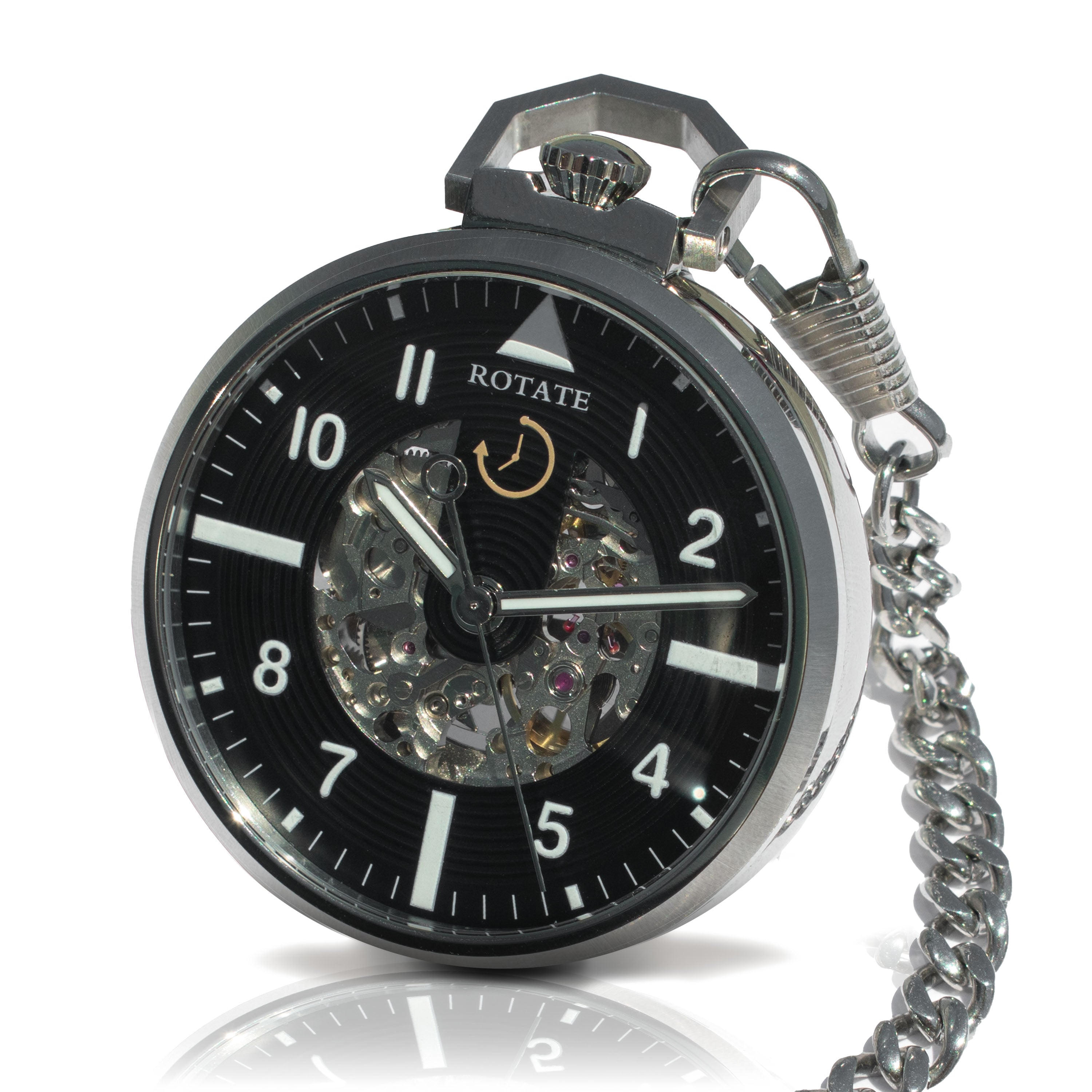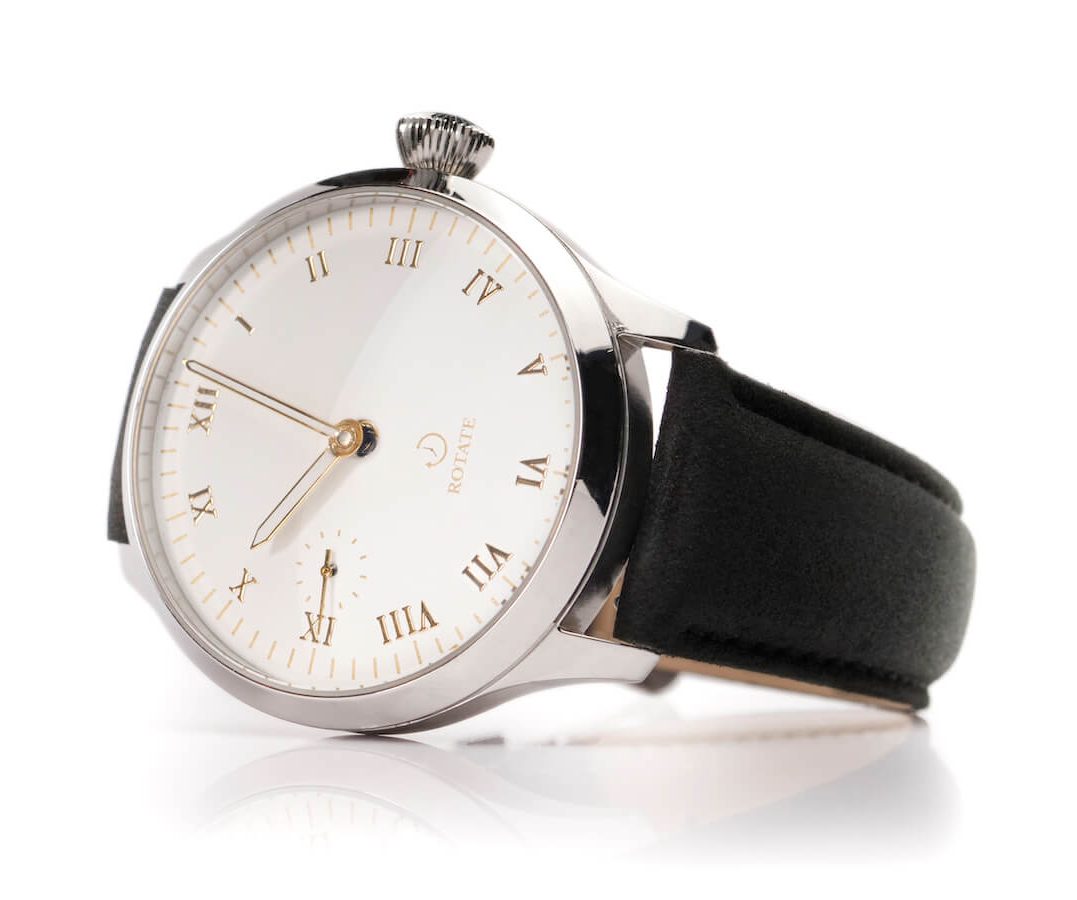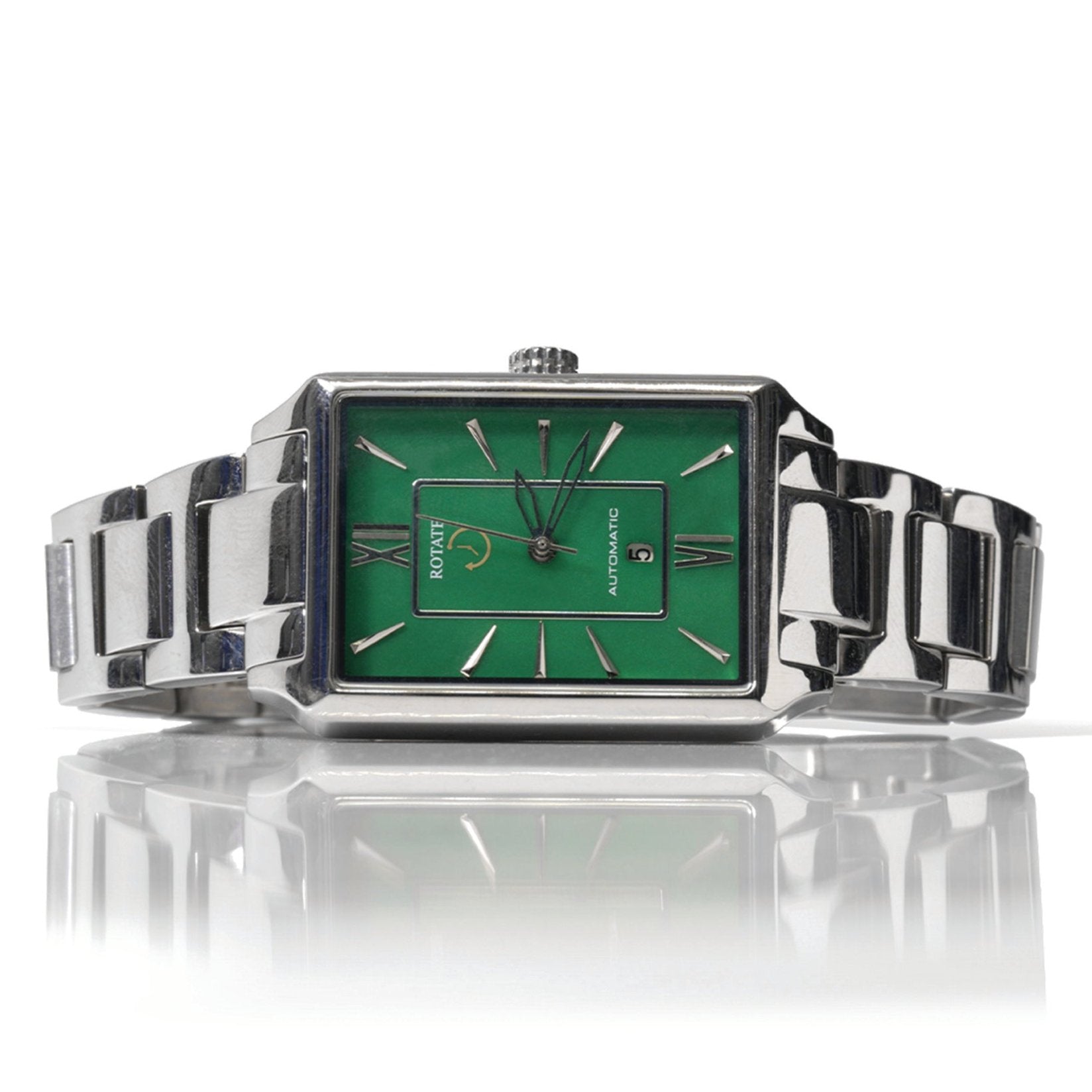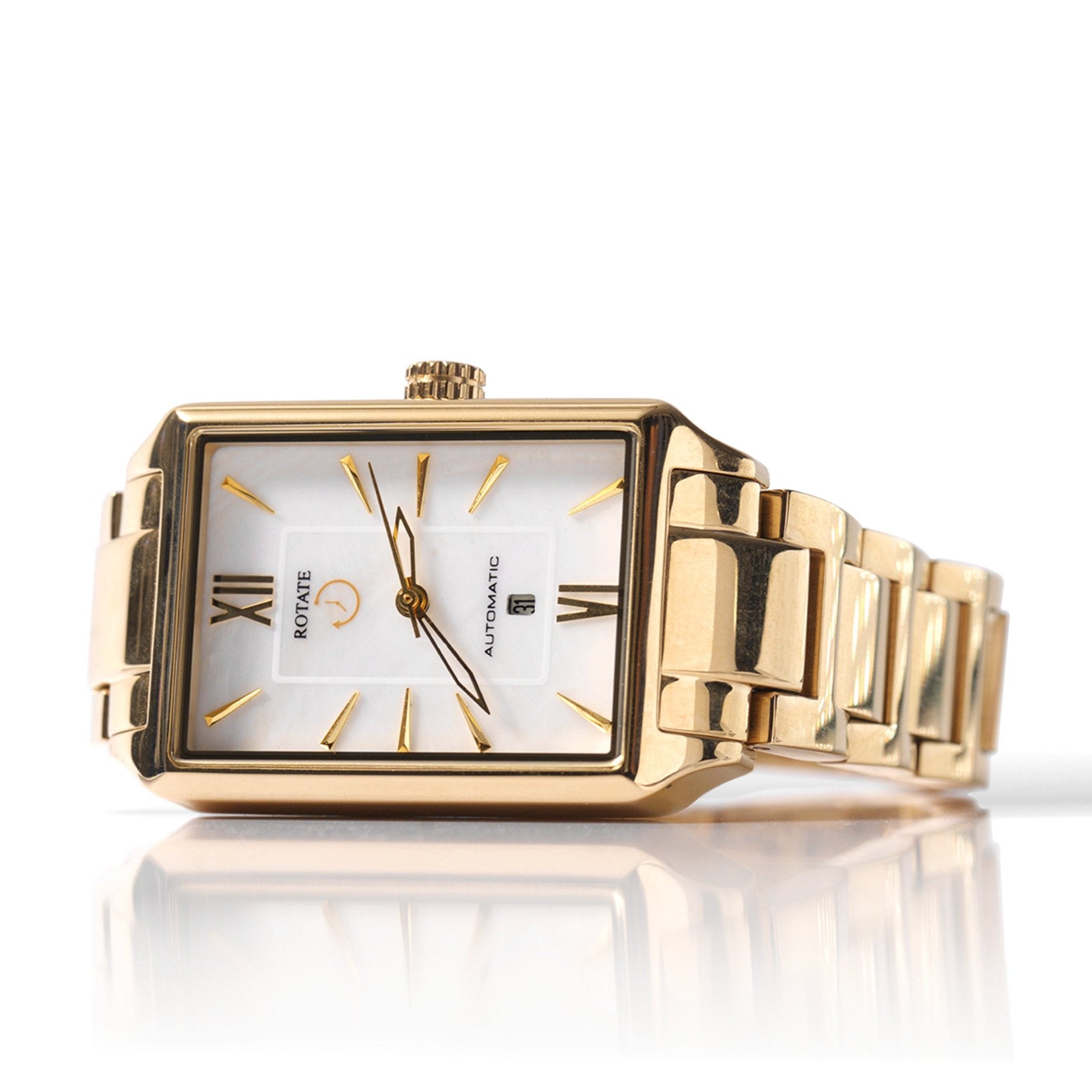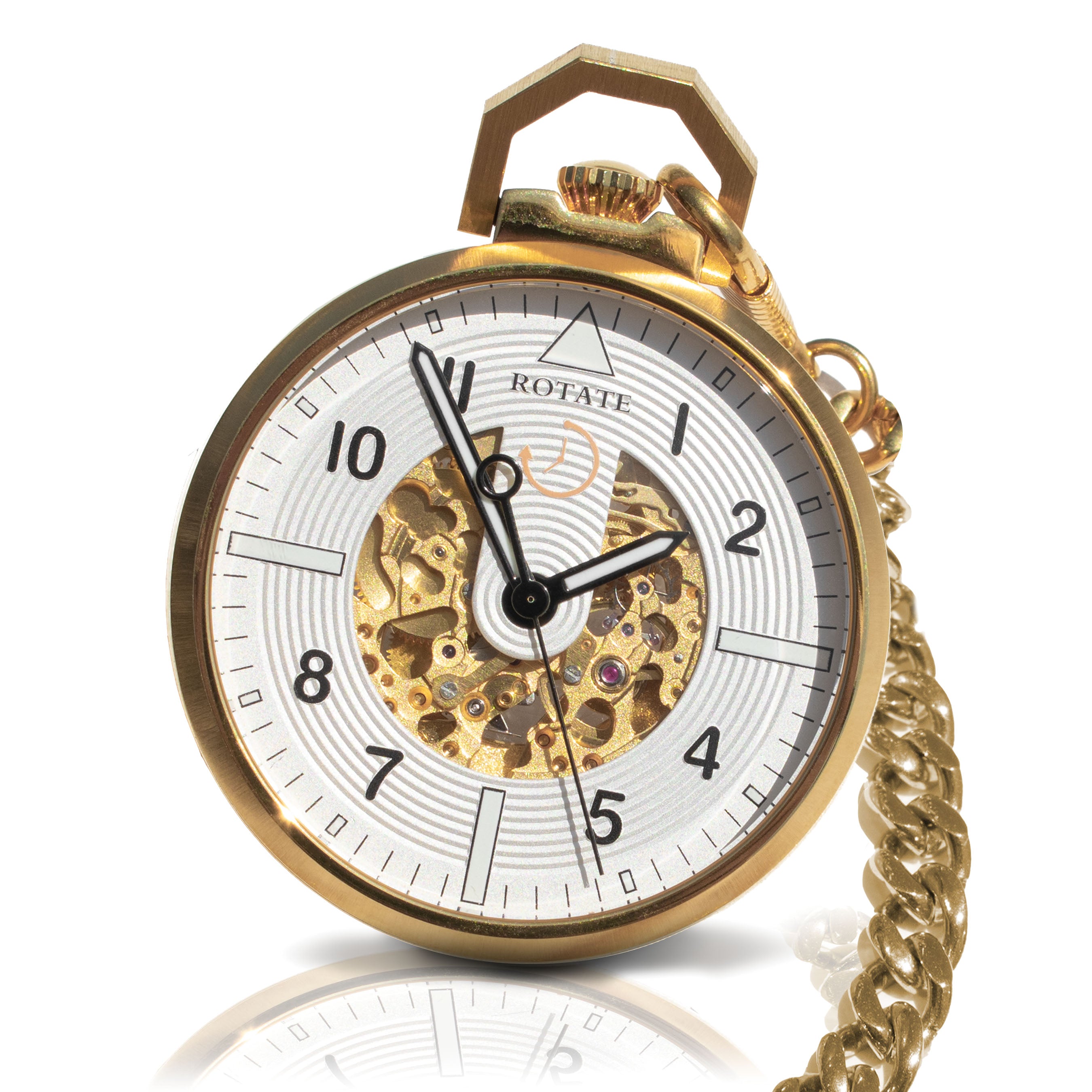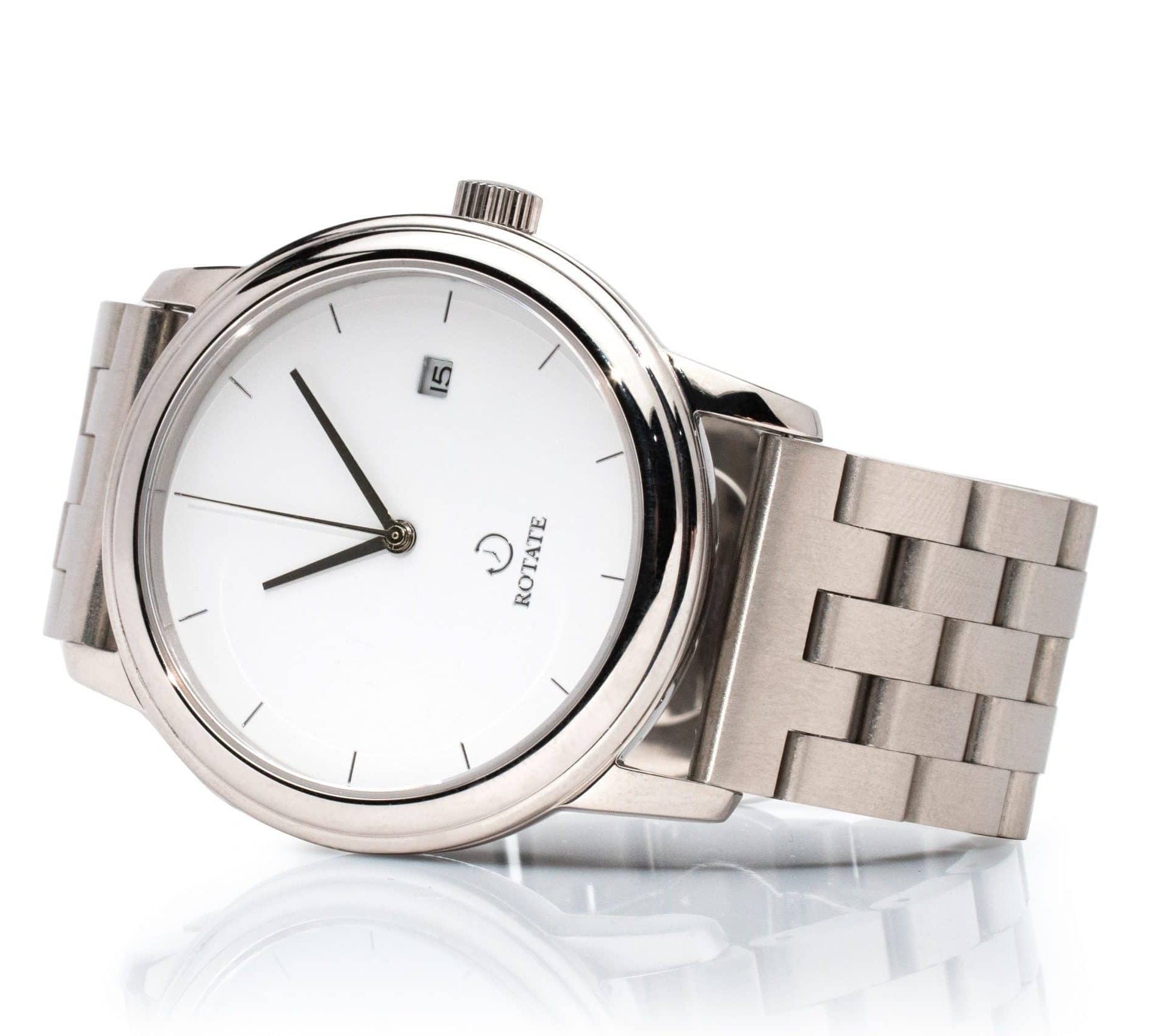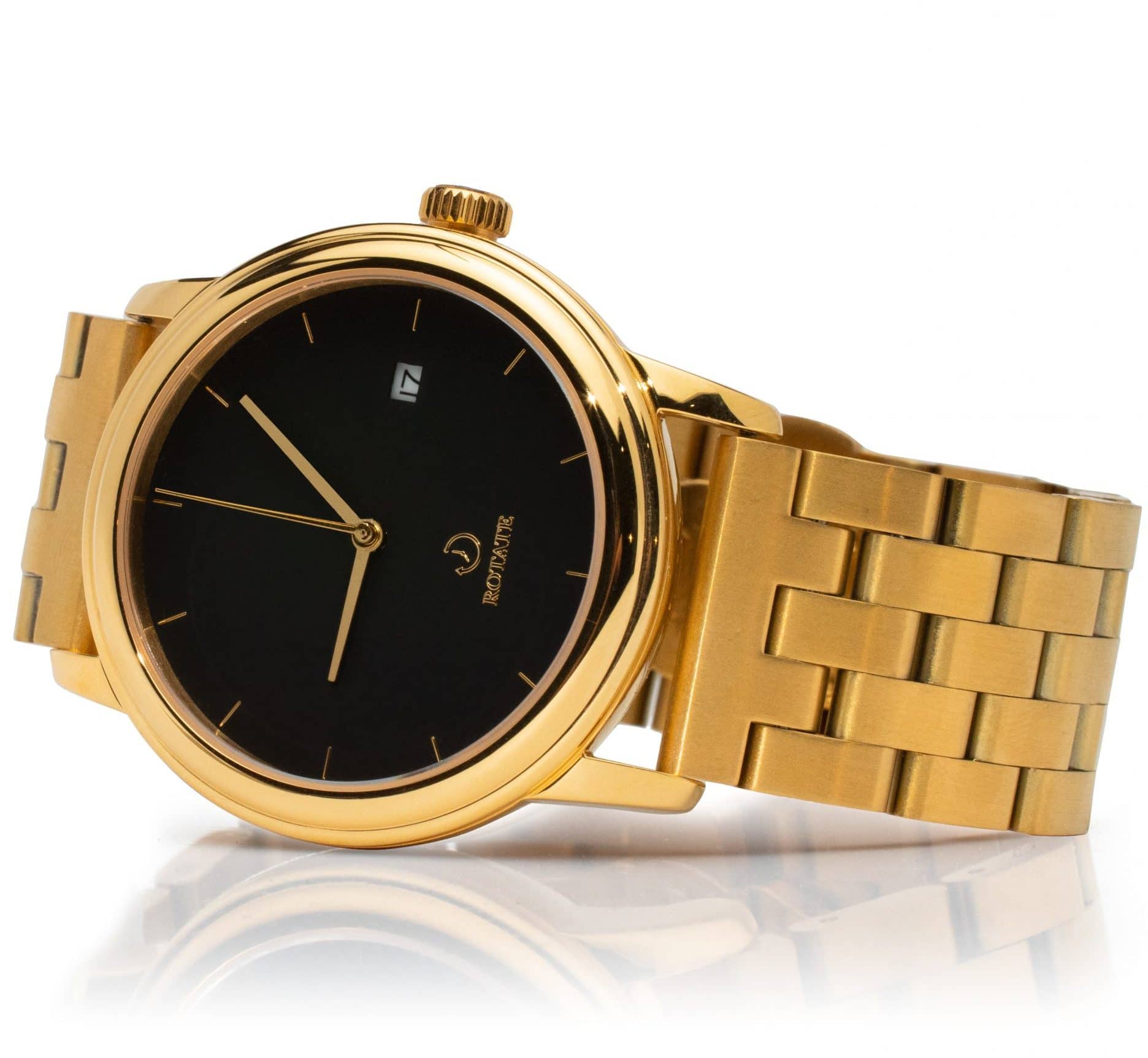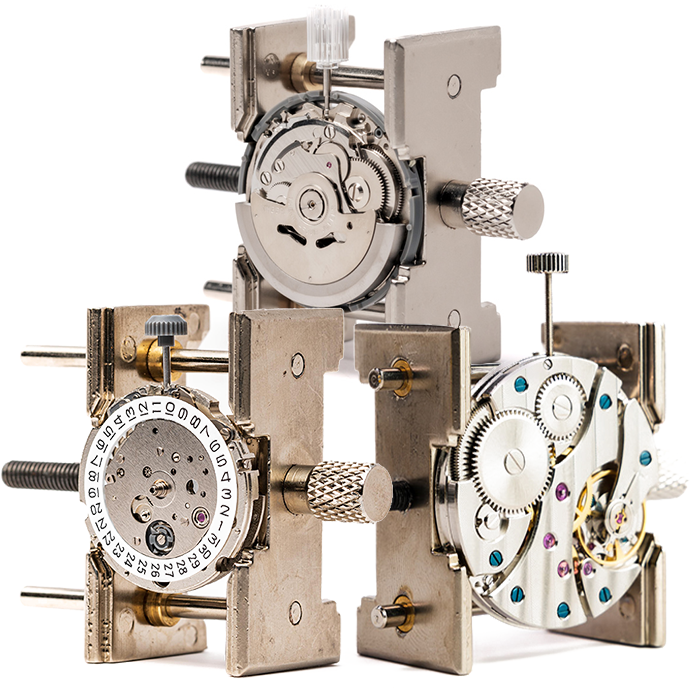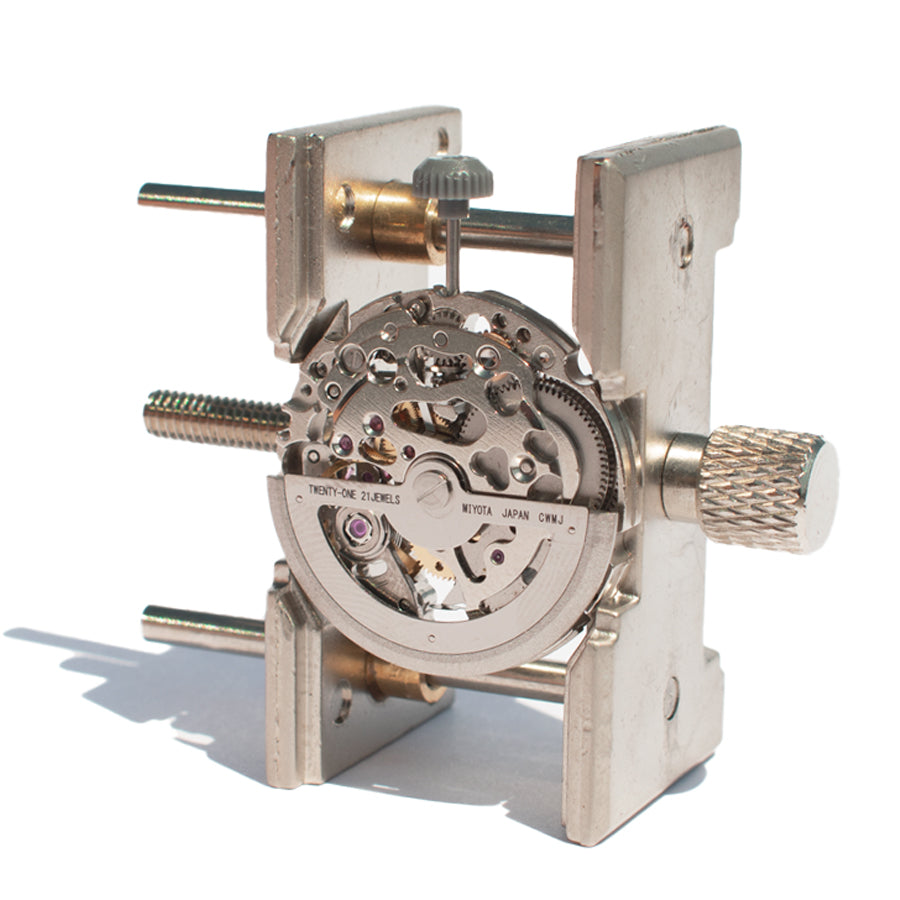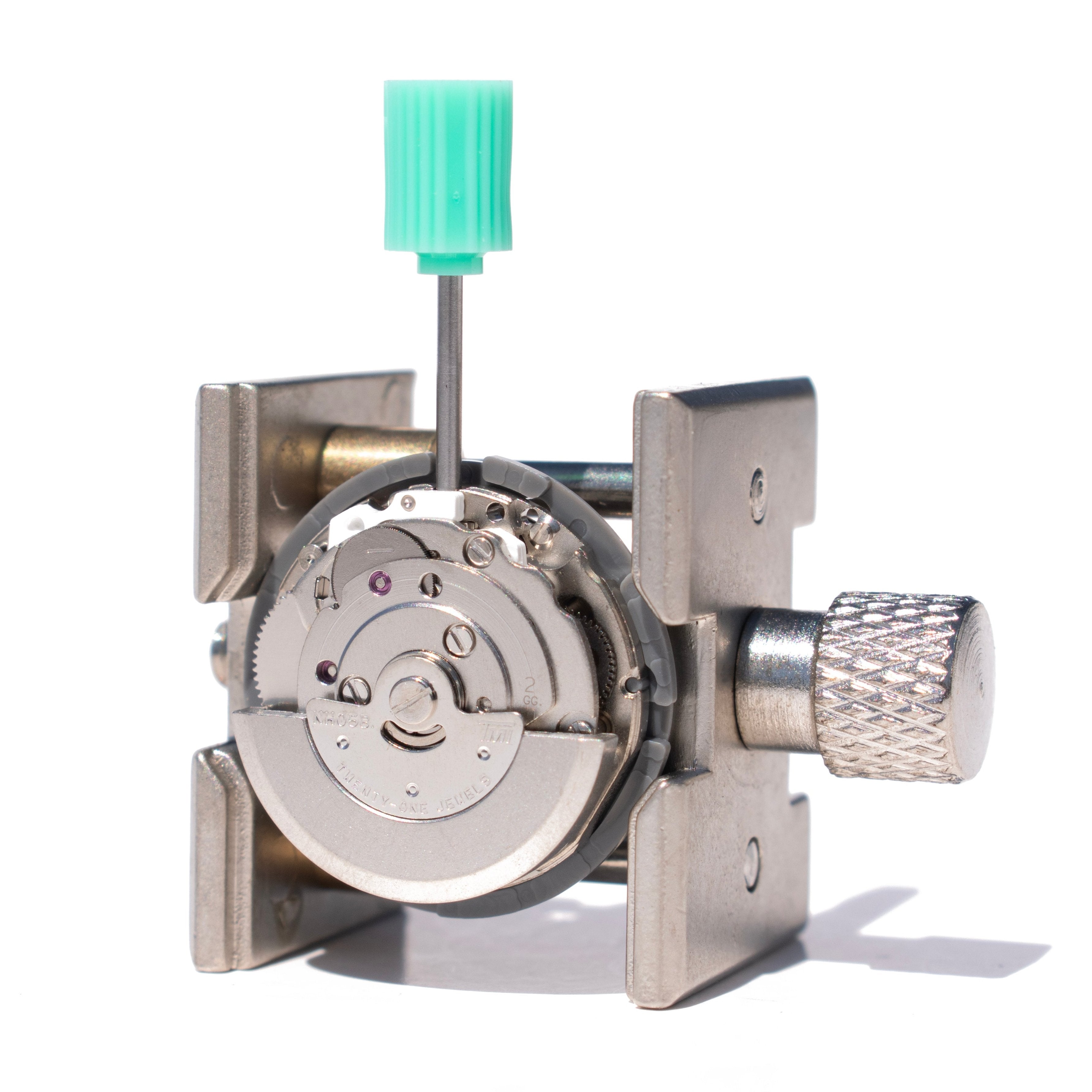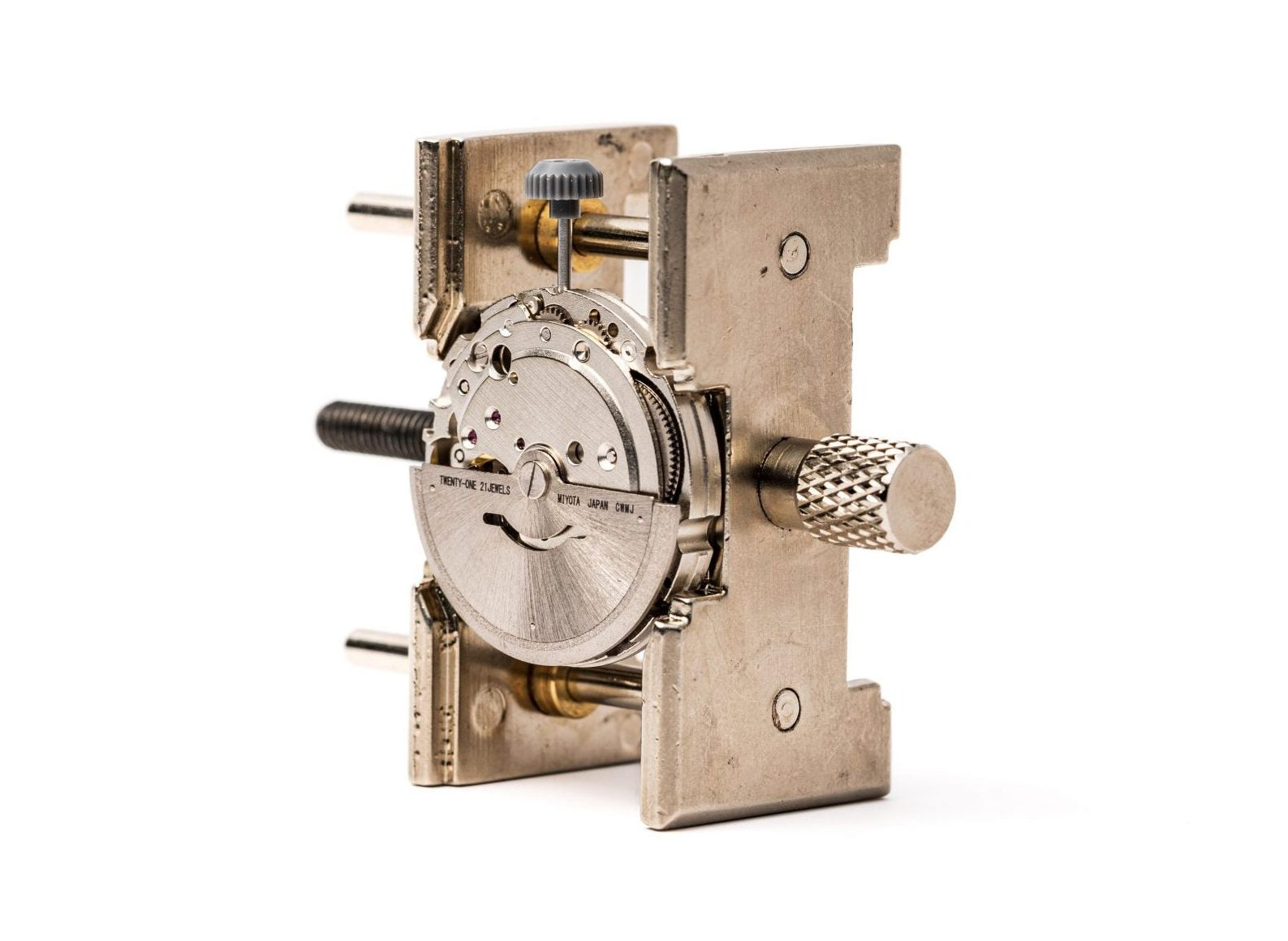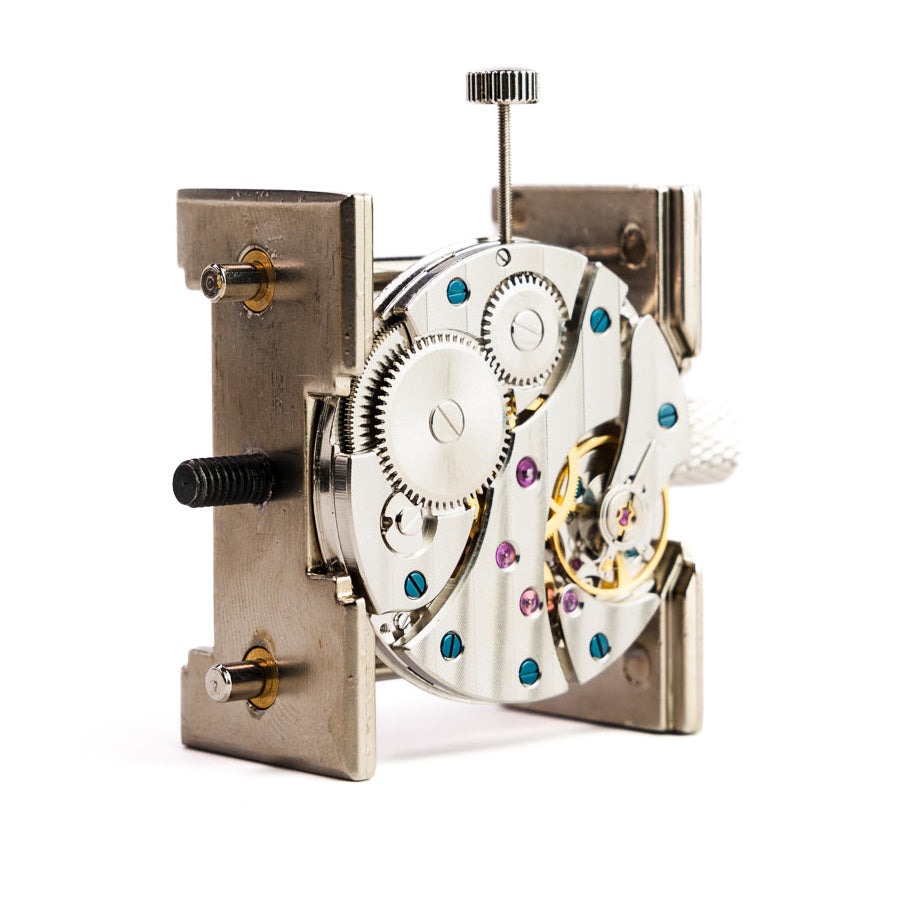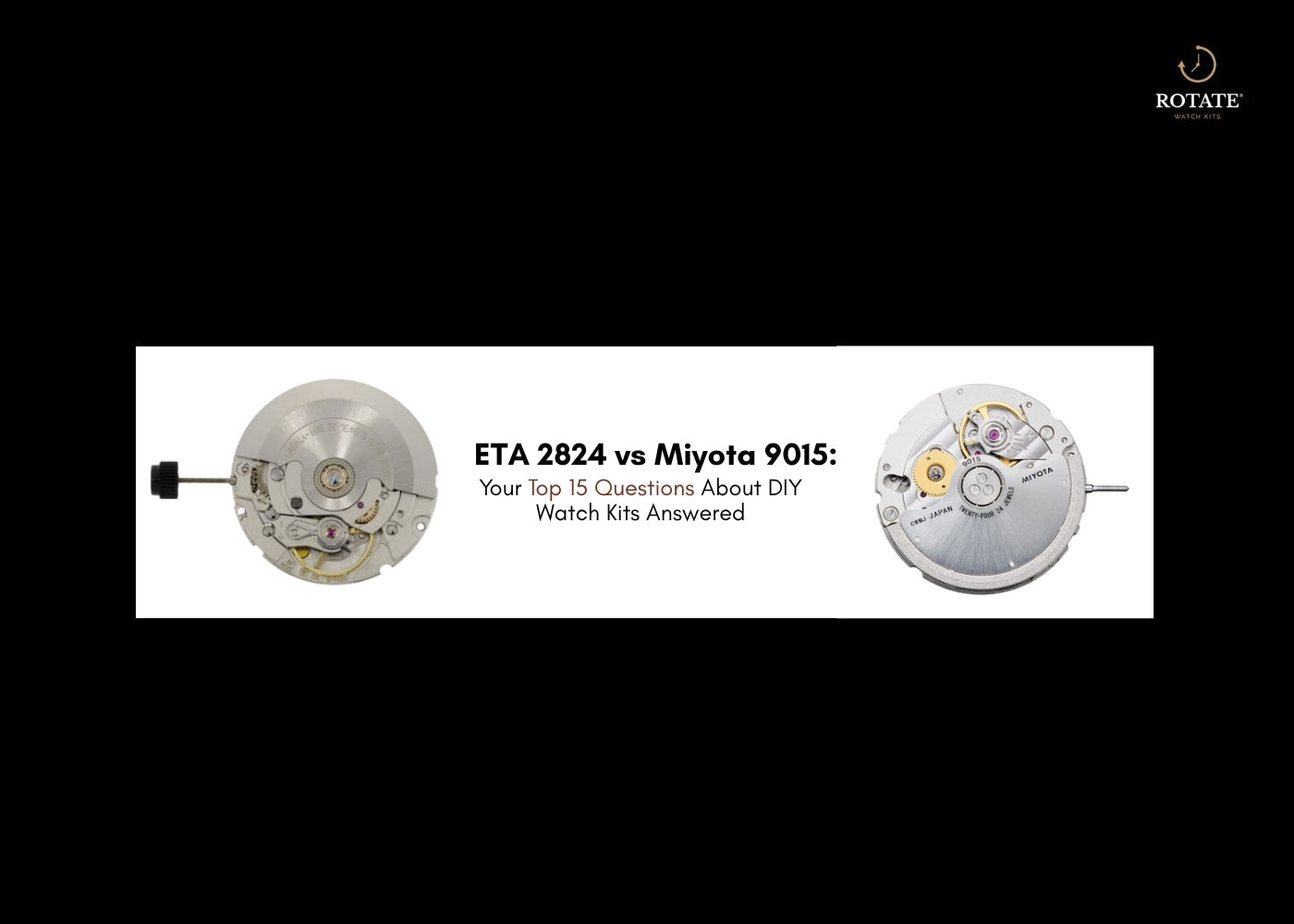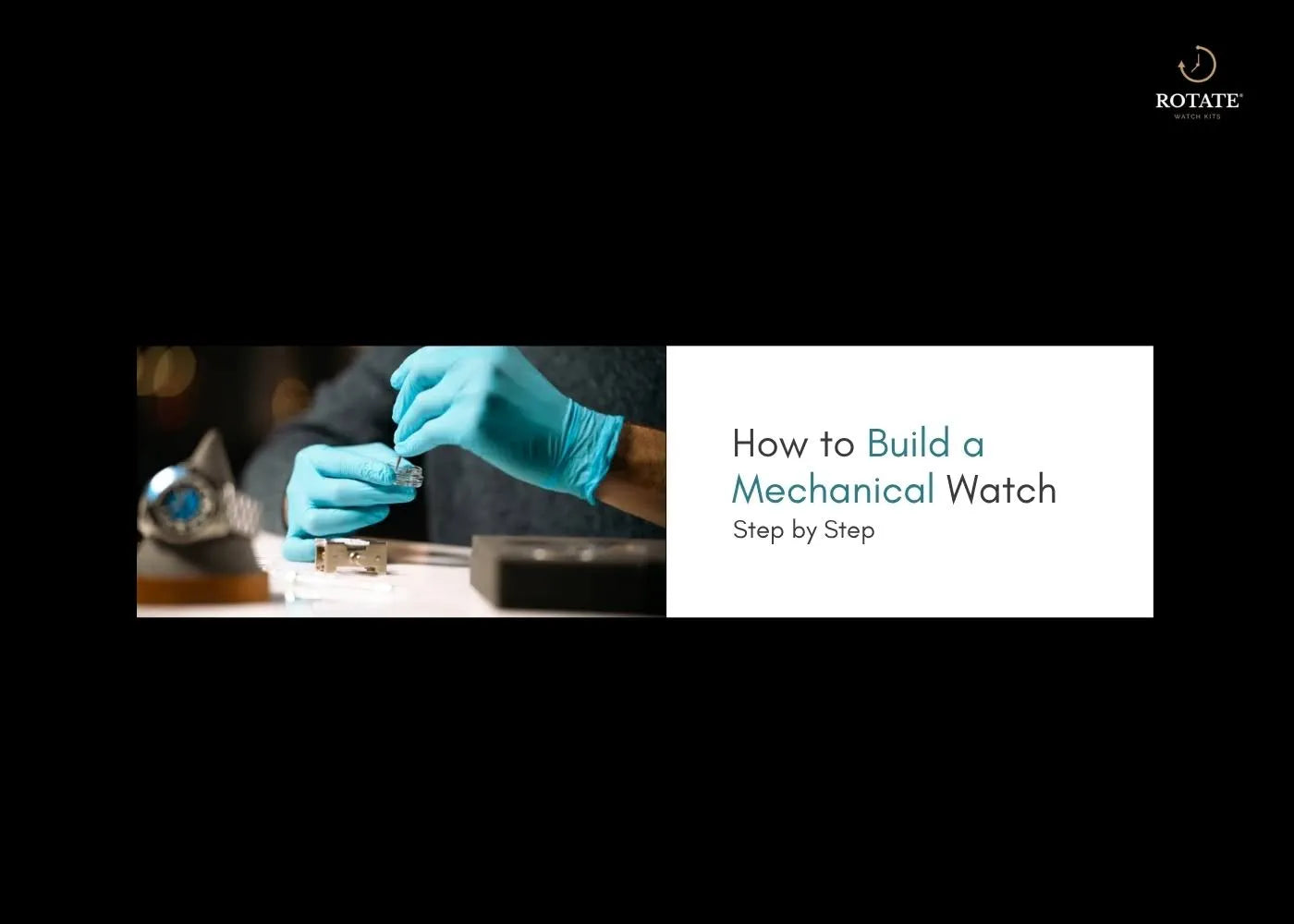
How to Build a Mechanical Watch Step by Step
What You Need to Build Your Own Mechanical Watch
Essential Tools and Components
Before starting your build a mechanical watch kit project, gather the right tools. Quality matters more than quantity here.
Required tools include:
- Precision tweezers for handling small parts
- Screwdriver set (typically 1mm and 2mm sizes)
- Finger cots or gloves to prevent oils from damaging components
- Spring bar tool for strap installation
- Clean, well-lit workspace
Most mechanical watch kits include these tools, eliminating the guesswork for beginners. Learn more about essential watchmaking tools before starting your project.
Understanding Your Movement Options
The movement serves as your watch's engine. Three popular choices dominate the build your own mechanical watchmarket: Seiko NH36, Miyota 8215, and Seagull ST3600.
The Seiko NH36 offers 24 jewels and date functionality, making it ideal for first-time builders. Understanding how automatic watches work helps you appreciate the complexity you're about to assemble.
Step 1: Prepare Your Movement
Inspecting the Movement
Start by carefully examining your movement. Check for any obvious damage or loose components. Most movements arrive pre-assembled, which protects delicate parts during shipping.
Understanding Movement Orientation
Identify the crown position (usually 3 o'clock) and date window location. Getting oriented now prevents mistakes later.
Step 2: Install the Dial
Securing Dial Feet
The dial attaches to the movement via small feet that fit into corresponding holes. Position the dial carefully, ensuring perfect alignment with the date window if your movement includes one.
Use gentle pressure to seat the dial. Never force components, forcing always indicates misalignment rather than insufficient pressure.
Verifying Dial Position
Rotate the movement to check for any wobble or misalignment. The dial should sit completely flat against the movement with no gaps.
For detailed dial installation techniques, explore our guide on watch dial styles and proper handling methods.
Step 3: Attach the Hands
Hour Hand Installation
The hour hand installs first. Slide it onto the center post and press gently until it seats. The hand should rotate freely without touching the dial.
Minute and Second Hands
Next comes the minute hand, followed by the second hand. Each requires increasingly lighter pressure due to their delicate nature.
Critical alignment tip: Set all hands to 12 o'clock during installation. Getting this right ensures accurate timekeeping later.
Understanding proper mechanical watch basics helps you verify correct hand installation and movement function.
Step 4: Case the Movement
Positioning the Movement
Place the completed dial and movement assembly into the case. Most cases use either screws or a press-fit design. The movement should drop in smoothly without forcing.
Securing the Movement Ring
If your case includes a movement ring, position it carefully to hold everything in place. Tighten any screws gradually in a cross pattern to ensure even pressure.
Step 5: Attach the Case Back and Strap
Sealing the Case
Press or screw the case back into position. For screw-down backs, hand-tighten first, then use appropriate tools for final sealing. Over-tightening can damage threads.
Installing the Strap
Use a spring bar tool to compress the spring bars and slide them into the case lugs. Ensure both ends click securely into place.
Learn about different watch strap options to customize your finished timepiece.
Common Mistakes When You Build a Mechanical Watch Kit
Rushing the Hand Installation
Hands bend easily under excessive pressure. Take your time and use proper hand-setting tools when possible.
Ignoring Cleanliness
Dust and fingerprints affect movement performance. Always work in a clean environment and use finger cots throughout the process.
Skipping the Testing Phase
Before final assembly, test the movement by winding it and observing the seconds hand. Catching issues early saves frustration.
Getting Started with Complete Kits
Complete mechanical watch building kits streamline the entire process by including quality-checked components, necessary tools, and detailed instructions. Kits starting at $140 provide everything needed for your first successful build.
The Cabot watchmaking kit offers an excellent entry point with easy difficulty rating, while the Marco kit provides more customization options.
For those wanting deeper movement understanding, consider pairing a watch kit with a Seiko NH36 movement kit to learn assembly from the ground up.
Your watchmaking story begins with a single component. Start building today.
FAQs
Q. How long does it take to build your own mechanical watch?
Ans. Most beginners complete their first mechanical watch kit in 2-5 hours, depending on complexity and experience level.
Q. Do I need prior experience to build a mechanical watch kit?
Ans. No prior experience is required. Complete kits include detailed instructions and all necessary tools for successful assembly.
Q. What difficulty level should beginners choose?
Ans. Start with easy or medium difficulty kits. These provide forgiving tolerances while teaching fundamental watchmaking skills.
Q. Can I customize my mechanical watch build?
Ans. Yes, most kits allow strap changes, dial swaps, and other customizations to create a unique timepiece reflecting your personal style.
Q. How accurate will my built mechanical watch be?
Ans. Properly assembled mechanical watches typically achieve accuracy within -20 to +40 seconds per day, comparable to finished watches at similar price points.
Q. What if I make a mistake during assembly?
Ans. Most components can be removed and reinstalled. Kits with warranties provide replacement parts if you damage components during assembly.
{ "@context": "https://schema.org", "@type": "FAQPage", "mainEntity": [ { "@type": "Question", "name": "How long does it take to build your own mechanical watch?", "acceptedAnswer": { "@type": "Answer", "text": "Most beginners complete their first mechanical watch kit in 2-5 hours, depending on complexity and experience level." } }, { "@type": "Question", "name": "Do I need prior experience to build a mechanical watch kit?", "acceptedAnswer": { "@type": "Answer", "text": "No prior experience is required. Complete mechanical watch kits come with detailed instructions and all necessary tools to guide successful assembly." } }, { "@type": "Question", "name": "What difficulty level should beginners choose?", "acceptedAnswer": { "@type": "Answer", "text": "Beginners should start with easy or medium difficulty kits, which offer forgiving tolerances while teaching fundamental watchmaking skills." } }, { "@type": "Question", "name": "Can I customize my mechanical watch build?", "acceptedAnswer": { "@type": "Answer", "text": "Yes, most kits allow customization such as strap changes, dial swaps, and other modifications to create a unique timepiece reflecting personal style." } }, { "@type": "Question", "name": "How accurate will my built mechanical watch be?", "acceptedAnswer": { "@type": "Answer", "text": "Properly assembled mechanical watches typically achieve accuracy within -20 to +40 seconds per day, which is comparable to finished watches at similar price points." } }, { "@type": "Question", "name": "What if I make a mistake during assembly?", "acceptedAnswer": { "@type": "Answer", "text": "Most components can be removed and reinstalled, and kits with warranties offer replacement parts if any components are damaged during assembly." } } ] }





